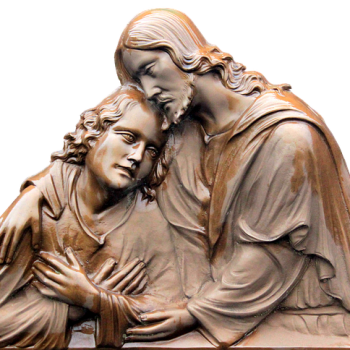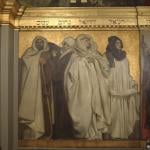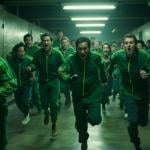Hardly anyone who talked about the recent election of our new pope did so without a mention of the movie Conclave. Released just last October, the film was not only a multi-Oscar nominee, but also, by coincidence, a very timely look into the process of selecting a new pontiff (albeit with a big surprise ending).
During the actual conclave of the cardinals last week, huge numbers of people were streaming the movie Conclave to try to get an insight into the process. Even the eventual choice, Cardinal Prevost, admitted to watching it when asked by his brother John if he had learned from the film “how to behave.”
Whether or not the movie accurately depicted this sacred meeting is for the cardinals to say. I read one critic who said that Conclave resembled the real thing about as closely as Mel Brooks’ Space Balls resembled actual space travel. Surely, that criticism is exaggerated. After all, movie companies hire consultants to help them get at least procedural matters correctly presented. Nonetheless, Hollywood will be Hollywood.
Given our reasonable skepticism and expectation of dramatic license, there are, however, some movies about popes that are informative as well as entertaining. I’d like to mention four others and encourage you to watch them.
The Agony and the Ecstasy
The Agony and the Ecstasy is a 1965 film based on Irving Stone’s 1961 novel of the same name. The story, set in 1508-1512, depicts the contentious interaction between Michelangelo (Charlton Heston) and Pope Julius II (Rex Harrison) during the painting of the Sistine Chapel ceiling.

This movie is a visual delight that earned five Oscar nominations. It’s also a lesson in art history and political history. How many people know that we used to have warrior popes who suited up in armor and went to battle? How many people realize that the beauty of the Sistine Chapel came after years of seriously taxing labor and petty criticisms from church hierarchy, or that the artist Raphael had to persuade Michelangelo to finish it?
The Shoes of the Fisherman
One of my favorite books, The Shoes of the Fisherman by Morris West (1963) was turned into a movie in 1968. As often happens, the book is better, but the movie is still reasonably good. This story is fictional, but it is amazing how close it comes to the real-life experiences of Pope St. John Paul II and Pope Francis.
For example, the main character is Kiril Lakota (Anthony Quinn), a priest who has been imprisoned for 20 years in a Siberian Gulag by the Soviets but is finally released by the Russian Premier (Sir Laurence Olivier). Pope John Paul II was born Karol Wojtyła and was largely responsible for the liberation of Poland from the Soviet Union.
Since the book was written 13 years before Karol Wojtyla became pope, the similarities are an amazing coincidence. In reality, the character was inspired by the release of Ukrainian Cardinal Josyf Slipyj from Soviet imprisonment in 1963.
Sir John Gielgud plays the pope who makes Kiril Lakota a cardinal and then dies, resulting in the Russian being elected to the papacy by cardinals impressed with his humility and real-world experience. Much as Pope Francis did, Pope Kiril rejects the pomp and circumstance of the Vatican. The plot emphasizes his compassionate nature and his concern for world hunger and poverty.
There are some interesting subplots along the way about theology and forgiveness, then this story comes to a climax when (spoiler alert!) Pope Kiril negotiates a standoff between Russia and China by offering the wealth of the Vatican’s treasures to finance famine relief. The book/movie gives a lot of food for thought about the Church’s role in the world.
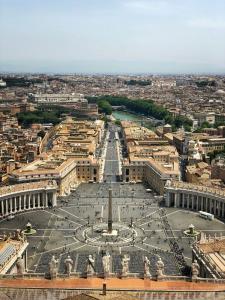
The Scarlet and the Black
The 1983 film The Scarlet and the Black is a World War II thriller based on J. P. Gallagher’s 1957 book The Scarlet Pimpernel of the Vatican. It is the true story of Irish Monsignor Hugh O’Flaherty, (Gregory Peck), who hides American and British POWs and Roman Jews, with the knowledge of Pope Pius XII (once again, Sir John Gielgud).
O’Flaherty, a master of disguise, plays a cat-and-mouse game with the Nazis while the pope delicately protects Vatican neutrality from Colonel Herbert Kappler (Christopher Plummer). One reason to watch this film is the humor that results from the Monsignor’s many clever tricks that frustrate the Nazis. Another is the example of courage set by the Monsignor who risked his life to protect others.
Still another and very important reason is the testimony the story gives to the often maligned reputation of Pius XII in regards to his relationship with the Nazis. He most definitely did not cave to them or sympathize with them. His diplomatic efforts to save the Vatican from invasion and the Church from all-out persecution, while secretly rescuing many Jewish lives, showed great wisdom and moral fortitude.
The Two Popes
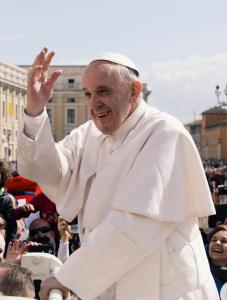
The Two Popes is a 2019 drama adapted from Anthony McCarten’s 2019 play The Pope. It is set at the time when Pope Benedict XVI (Anthony Hopkins) is considering resigning from the papacy and Cardinal Jorge Mario Bergoglio (Jonathan Pryce), later Pope Francis, has come to Rome to personally plead for the acceptance of his resignation as archbishop.
Cardinal Bergoglio tries to talk the Pope out of resigning and the Pope refuses to accept Bergoglio’s resignation. The story follows their supposed conversations as they share their personal histories, regrets, interests, opinions about the Church and God, and so on, developing a better understanding and friendship between them.
This movie was a box-office hit and earned Oscar nominations for both Hopkins and Pryce. It is also a very thought-provoking story that gives a bit of insight into the lives of these two prominent leaders and those charged with such tremendous responsibility in the Church.
So find these movies on a streaming service, invite your neighbors and friends, pass out the popcorn, (maybe prepare a few discussion questions) and enjoy some good entertainment on a papal theme.






